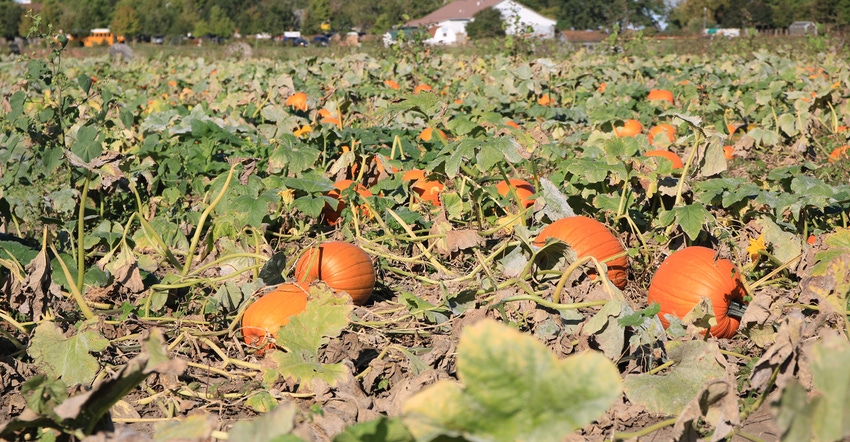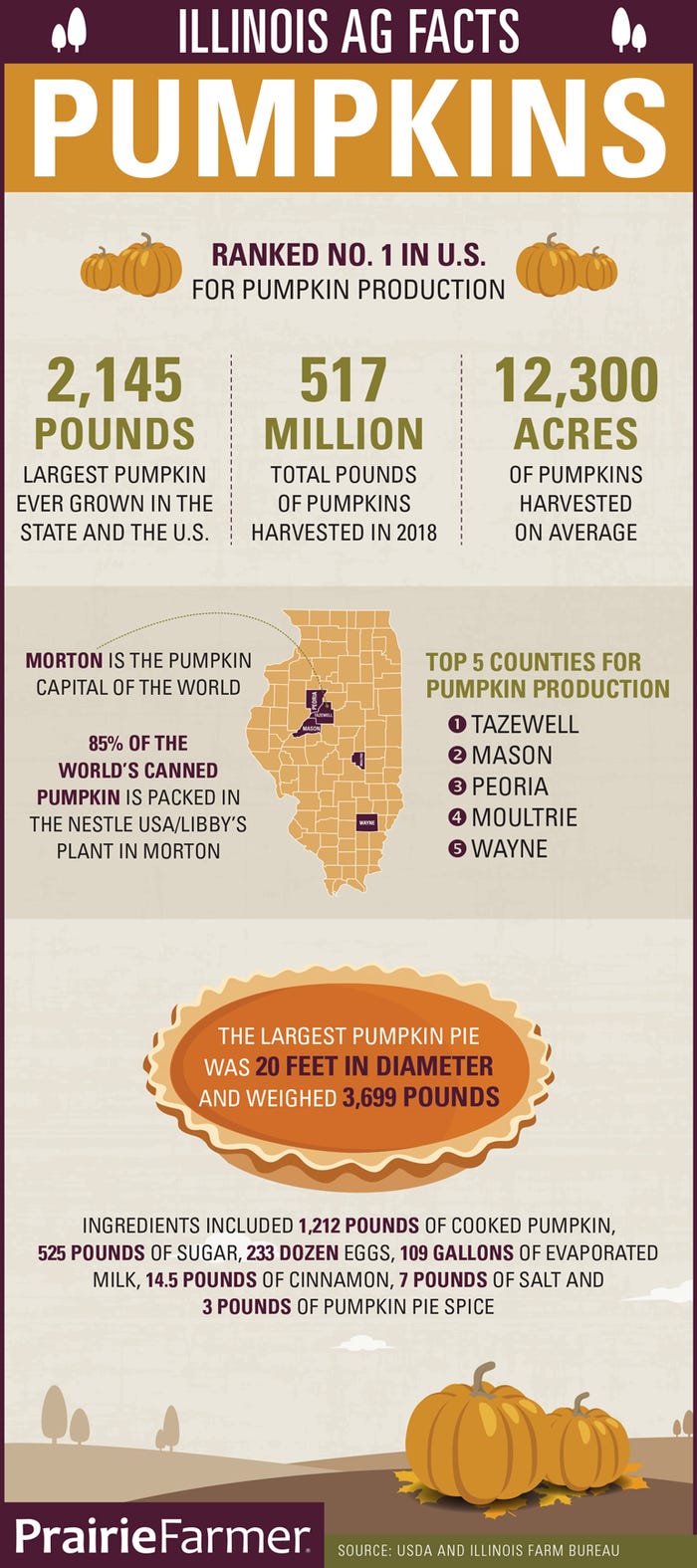
Pumpkin harvest is going later than normal this year in Illinois, the nation’s leading producer of canned pumpkin and jack-o’-lantern pumkins. But reports from the halfway point of harvest show above-average yields coming through Libby’s canning plant in Morton, which processes 85% of pumpkin sold on store shelves.
Morton-area farmers raise the Dickinson variety, a slightly less photogenic pumpkin than heirloom jack-o’-lanterns. They usually aim for an April planting to get the crop mature early enough to feed the processor gradually up into November — when demand for the product spikes.
Like corn and soybean farmers in 2019, pumpkin farmers couldn’t get in the field until late May, finishing planting in early June. But a hot and dry summer meant the plants could catch up, building yield by creating more flesh than water.
“Since it’s an above-average crop, I think we will go into November,” says Jim Ackerman, Libby’s agriculture manager. “We’ve gone into mid-November before, but keep it warm and dry, and we’ll be fine for a later-than-normal harvest.”
In the case of The Great Pumpkin Patch in Arthur, Ill., the delay caused by saturated soils and rain all the way until early June meant they had to mud-in their first planting and replant their second. Owner Mac McDonald says it was “probably the hardest growing season we’ve ever had.”
But they usually target early June anyway, since they open to the public for picking between Sept. 8 and Oct. 31. Their third seeding of pumpkins turned out nicest in the end, though there were pockets of high quality in earlier-planted plots.
Overall maturity was delayed, but the crop has matured well and stayed fresh for visitors coming near the end of the season.
“The season used to peak at Columbus Day. That was the main event, and then things really tapered down,” McDonald says. “In the last 10 years, winter has set in later and later, and we’ve gotten busier even toward the end. I think people are still trying to hold on to summer.”
Pumpkins are a kind of cucurbit, and have been sold by the McDonalds at their 150-plus-year-old Arthur farmstead since 1977. They have a unique diversity of heirloom varieties that helps spread their risk for the season.
“We are able to handle a season like this fairly well,” McDonald says. “I wouldn’t say it’s easy, but we can hide the fact that we have 25 varieties that really did nothing this year, because we have 300 [others] waiting in the wings that did OK.”
McDonald says yields look average, and University of Illinois plant pathologist Mohammad Babadoost says that trend holds true statewide for jack-o’-lantern pumpkins, depending on if the grower had irrigation for the dry summer.
“Those people that had pivot or some sort of irrigation, they were fine,” Babadoost concludes. “But those who did not have an irrigation system, they did not do very good, or at least not the quality of pumpkins. Yield is down, and the quality is down.”

About the Author(s)
You May Also Like




